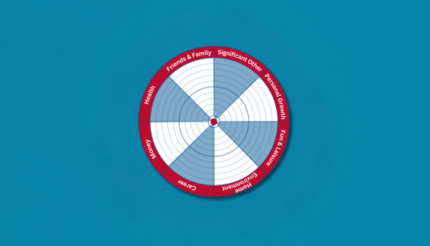Sales mean helping people to buy. The good news is, being good at sales is a matter of studying and practising until you develop the right sales skills. So, even if the idea of selling is far from your comfort zone, you can change that if you study and practice.
In this blog post, let’s focus on what you should know about sales to get started.
 The 3 Sales Stages
The 3 Sales Stages
The sales stages have changed significantly in the past few years. The old methods that used to bring clients ten years ago are no longer lucrative now. The focus today is on building and maintaining relationships with clients for long-term business opportunities.
With that in mind, here are the three stages of a sale:
- Rapport. In this stage, you must find the commonalities between you and your prospect to build the “know” factor — which translates as you getting to know them and them getting to know you.
- Closing. This stage is less complicated now, thanks to all the work you did in the first stage. You and your prospect know each other, which makes the conversion easier.
- Follow up. After closing the deal, you want to follow up and keep an open communication channel for retaining clients and getting repeated business from them.
As a salesperson, your job is to develop a set of questions to build your sales process based on these three stages.
Here are some best practices for building your conversation:
- You start with the funnel, where you use open-ended questions to make prospects talk and share information with you. Sometimes, you need to play dumb and dig deep to get the response you’re looking for.
- Instead of talking about your product and its benefits, ask questions and allow the prospects to sell themselves. Let them share with you the ten benefits of your product they’re looking for. Even though you know the answer to what you ask, you want them to say it to build awareness and get an emotional response.
- As you go down the funnel, you get to more specific questions to lead the conversation towards the sale. At this point in your discussion, you need to soften the questions with phrases like “Can I just ask,” “By the way,” or “Incidentally.”
- When the time is right, you need to offer multiple solutions to put the prospect in control. This way, the buyer’s choice is between the options you’ve shared and no longer between yes/no purchase.
- Make sure the prospect is ready to buy before you ask them to make a decision. This way, you avoid the hassle of having to go with them through the objections another time.
- Instead of asking people if they want to buy, ask detail-oriented questions around the buying process, such as “When do you need the delivery” or “What billing address do you have”?
 Buying Is an Emotional Decision
Buying Is an Emotional Decision
Remember that people don’t like to be sold, but they love buying. If you learn your lines (what you’re supposed to say in each stage of the conversation) and practice the right voice inflexions long enough, you’ll convert leads into clients faster and with less effort.
A great salesperson learns the script and builds the skills to ask the right questions at the right time. The purpose of asking questions is to find as much as you can about your potential client’s problems so that you can provide them with the best solutions.
Listening to what the other has to say and understanding their needs, wants, and desires help you connect with the potential client and build the know, like, and trust factors. Why does connecting matter? Because buying is 20% a logical decision and 80% an emotional decision.
The buyer will justify the purchase logically, but the buying decision comes from managing the emotions and building the relationship with the person in front of you. To reach that, you should shift the conversation from your product to what’s in there for the buyer. You want to be a problem-solver: you listen to the potential client, identify the pain points to address, and offer a solution to the challenge.
 Someone Always Makes a Sale
Someone Always Makes a Sale
Brad Sugars, Chairman and Founder of ActionCOACH, says that someone always makes a sale during a sales conversation. It can be you selling your help or the other person selling you the idea that you can’t help.
To be the one making a sale, you need to be focused on your prospect and the needs you can meet with your offer. Every prospect can be an excellent prospect if you listen and identify what they want to buy, how much they can afford to pay for it, and how you’ll solve the challenge.
Great salespersons aren’t focused on the profit but the prospects. You want to know their problems to help them solve their issues. Sometimes, you might have to recommend someone else as a solution, but that, too, is part of the process of being helpful and putting the prospect first.
Make sure you ask as many questions as possible to get to the bottom of your prospect’s problems. Instead of taking the surface answer, keep digging and asking further questions until they tell you everything you need to know about the issues you intend to solve. You’ll know you’re getting close to the sale when the prospect asks you a question, and the way you answer that query can bring you closer to your goal.
The conversation is usually a series of sequences that follow the “Question – Listen – Positive stroke” pattern. You ask something, listen to the answer, and give verbal cues that let people know you’re actively listening to what they have to say.
 The Purpose Statement
The Purpose Statement
Another essential element to master is your purpose statement. This is similar to an intro, in which you set up the sale, and you use it when you sit down together with your prospect.
With this purpose statement, you get to control the conversation while also letting people know that they have control over how the process continues. Simply put, you tell people what they should expect from the conversation right from the start to create expectations and prepare the other person for making a buying decision.
Every purpose statement should have the following elements:
- An initial part in which you ask for permission to have the conversation.
- A section in which you outline the process.
- A phrase in which you suggest that you’ll offer the solutions, followed by something like “If we agree that it will be a good solution…”
- A disclaimer in which you say that you would ask the prospect to make a decision at some point in the conversation.
- A disclaimer in which you say that you’ll ask them to invest (not buy).
- A conclusion in which you remind them that they’ll have to take action to start the process.
- In the end, ask permission to invest the time that way.
The purpose of this statement is to be very upfront and clear about what will happen during the talk. This way, people know what to expect and feel at ease having the conversation with you. As you can see, you don’t hide the fact that you’ll ask for a sale.
If you have numerous meetings with prospects, you’ll need more statements, and not all of them will be for closing the sale but for obtaining a second meeting or another step.
What’s next?
Start working on your purpose statement: what people should know when going into a sales call with you and how you plan to say it.





